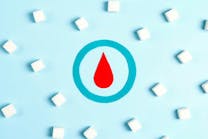In the November 2012 issue of MLO, I wrote of advances in molecular infectious disease diagnostics and, in particular, those pertaining to the fight against sepsis. In this article, I take a broader look at the evolution of clinical microbiology in response to advances in the diagnosis and treatment of viral infections and other infectious diseases. Changes in clinical microbiology over the past century have been prompted by a change in clinical needs. As antimicrobials and antivirals for specific diseases have improved, the need for rapid and more accurate diagnostics has moved to the forefront of clinical microbiology. While advances in viral diagnostic techniques have become widely adopted because of the difficulties associated with viral culture, to date, none of the technological innovations in clinical bacteriology have allowed microbiologists to completely abandon the doctrine of traditional culture techniques. As new molecular diagnostic assays for infectious diseases have become viable options to address current clinical needs, microbiologists now face the challenge of leaving the comfort zone of traditional culture techniques.
In microbiology, cell culture has always proven more difficult for virology than bacteriology. While viral culture remains a sensitive and specific method for the detection of viruses, this technique is hindered by slow turnaround times, the need for highly trained staff, and the high cost of maintaining viral cell lines. To further complicate matters, typical viral cultures require anywhere from 1 to 14 days of incubation, limiting in many cases the clinically actionable use of the test results. Historically, the role of diagnostic virology in clinical management of patients has been reduced, in part because of these limitations of viral culture. During the past 50 years, the continued development and refinement of antiviral therapeutics has created the clinical need for specific viral diagnosis. In response to these clinical needs and the limitations of viral culture, advances in diagnostic virology have led to the development of antigen detection techniques, serology, and, more recently, direct nucleic acid detection techniques, high-throughput nucleic acid extraction techniques, and next-generation sequencing. Microbiologists have been quick to abandon viral culture as these new immunologic and molecular tests have been able to provide rapid and accurate identification of a wide range of viral targets at a reasonable cost.
During the 1980s, antigen detection techniques, including immunoperoxidase staining, fluorescent antibody staining, and enzyme immunoassays (EIA), became widely adopted as solutions to viral culture. These antigen detection methods are especially useful for slowly growing or labile viruses in which isolation and recovery using viral culture methods is difficult. In particular, EIAs have become very popular methods for targeting respiratory specimens (RSV, influenza, and parainfluenza), cutaneous specimens (HSV and VZV), and blood specimens (hepatitis B virus and CMV). While EIAs and other antigen detection techniques have offered diagnostic capabilities beyond that of viral culture, these tests have limitations of their own. For respiratory viruses, EIAs used for the detection of influenza can distinguish between influenza A and B within 30 minutes with affordable costs and little hands-on time; however, these tests cannot identify influenza A subtypes or specific strains of influenza A or B. Furthermore, these tests for influenza lack the sensitivity (65% to 90%) and specificity (65% to 100%) to completely address the clinical need for rapid and accurate virus detection.1
One of the most recent innovations in diagnostic virology harnesses the benefits of direct nucleic acid detection. Following the development of polymerase chain reaction (PCR) technology in 1985, the addition of an enzyme reverse transcriptase step (RT) allowed PCR to detect viral RNA. Theoretically, with this technology, all viruses can be detected. In addition to PCR, other new methodologies using nucleic acid amplification techniques (NAAT) have addressed the clinical need for improved analytical sensitivity and specificity while maintaining turnaround times comparable to antigen detection techniques, with added benefits. Currently available NAAT molecular assays for common respiratory viruses not only can detect influenza A and B, but can also determine influenza A subtypes by identifying the influenza A hemagglutinin genes. To further address clinical needs, these tests are designed to ensure that clinical virology moves into a near-patient setting in the clinical microbiology lab, utilizing CLIA Moderate Complexity testing platforms with internal controls which allow for on-demand testing as patient samples are received by the lab. Future development of these platforms will focus on improved automation and reduced complexity to ensure that clinical microbiology laboratories can continue to bring fast and accurate viral diagnostics to a near-patient setting.
The advent of high-throughput nucleic acid extraction systems over the past decade has complimented the development of both direct nucleic acid detection platforms and next-generation sequencing initiatives in virology. The capabilities of high-throughput nucleic acid extraction systems have steadily evolved from only having the ability to detect single-analyte targets to being able to detect multiplex targets. As infectious disease testing transitions to highly multiplexed tests, next-generation sequencing has become a useful tool for virology, with applications that include the rapid detection of viral resistance.
The first successful techniques for DNA sequencing were obtained in the 1970s using labor intensive two-dimensional chromatography methods. The subsequent development of fluorescence-based sequencing methods with automated analysis made DNA sequencing workflow substantially easier and orders of magnitude faster, greatly accelerating medical research applications. The latest advances in next-generation sequencing techniques reduce cost by using high-throughput sequencing technologies that parallelize the sequencing process, yielding thousands to millions of sequences at once. Next-generation sequencing allows for an unprecedented possibility of large-scale sequencing of the virus genome.
One promising application of next-generation sequencing results from the ability to generate HIV-1 genome sequences. Understanding the HIV-1 genome is integral to understanding both the dynamics of this pandemic at a population scale, and also viral diversification, including the acquisitions of drug resistance mutations, in individual patients.2 Because of the high degree of sequence heterogeneity of HIV-1, next-generation sequencing will serve as the most suitable method for advancing understanding and subsequent treatment of HIV-1 infections. As with HIV-1, next-generation sequencing will likely play a larger role in other parts of virology going forward as new applications are discovered.
Unlike virology, however, clinical bacteriology has undergone minimal change in methodology over the past 50 years. Bacterial cell culture does not exhibit the same excessive costs and difficulty to perform as viral culture, and until recently no technology had been developed that could address clinical need better than pure culture. Bacteriology got a significant jumpstart with the advent of certain tests, including the Gram-stain, acid-fast stain, and coagulase reactions, to name a few, that made it possible to separate the vast array of bacteria into manageable categories based on the anatomy of the organism and its source. Subsequent attempts to further divide and isolate bacteria led to the development of differential media in the early- to mid-20th century, leading to the better understanding and targeted use of penicillin, and the development of many of the antimicrobial agents we know today including erythromycin and tetracyclines. Following these developments, systems approaches gained traction in bacteriology, providing new means to identify multiple microorganisms with one test.
Eventually, mechanization of analytical microbiology gave way to automation with the introduction of such equipment as automated blood culture systems, phenotypic bacterial identification, and antibiotic susceptibility platforms. While large strides have been made in the development and implementation of innovative technologies that streamline cell culture, none of them has allowed microbiologists to completely abandon bacterial culture. Furthermore, the evolving clinical need for rapid bacterial identification could not be addressed due to the inherent Achilles heel that both bacterial and viral culture share: slow turnaround times.
Stepping up to address this problem are molecular diagnostic techniques, which are viewed by some as the first viable alternative to cell culture for infectious disease. New molecular tests for bacteriology address the clinical need for fast and accurate identification of the causative pathogen, as well as detection of associated resistance markers, often using a single multiplexed test. In addition, these multiplexed tests offer the ability to detect a greater number of potential pathogens from a single specimen and are delivered on moderate complexity platforms, enabling clinical microbiology labs to run them on-demand around the clock as patient samples come into the lab. The most significant advantage of these molecular assays over traditional cell culture for infectious diseases is the rapid turnaround time to identification, with results available in hours as opposed to days.
With this rapid turnaround time, certain molecular diagnostic tests have already become an essential tool in the fight against hospital-acquired infections (HAI), including septicemia and Clostridium difficile. Rapid diagnostics is of the utmost importance for bloodstream infections, as it has been shown that mortality increases by a rate of 7.6% for each hour that administration of proper antibiotics is delayed.3 Molecular assays for the detection and identification of Gram-positive bacteria and corresponding antibiotic resistance markers are also currently commercially available. While not nearly as life-threatening as bloodstream-infections, hospital-acquired C. difficile infections (CDI) have drastically increased in number and severity in North America and Europe over the past decade. Currently available molecular diagnostic tests allow for early and accurate diagnosis of CDI, which is critical for both proper treatment of the infected patient and subsequent implementation of isolation and contamination procedures to prevent further spread of the infection.
As with virology, next-generation sequencing has the potential to be a viable method for bacteriology, offering fast and accurate species identification, resistance and virulence testing, and monitoring of the emergence and spread of bacterial pathogen. However, there are substantial obstacles to overcome to allow for routine use of next-generation sequencing for bacteriology. Success hinges on thorough validation of genotypic prediction of the phenotype, which is necessary especially for determining antibiotic resistance.4 Further, routine use is also dependent on achieving turnaround times on the order of hours for sequencing and analyzing data and reducing cost to the point where next-generation sequencing can be available to labs of all sizes. While these hurdles are tall, there is the opportunity for near-term adoption, as in the case of Mycobacterium testing, where whole-genome sequencing could provide at a lower cost the same information currently provided by the MTBDR assay along with additional details about species identification and resistance determinants.4
There is no denying that the ability to respond quickly to the ever-changing clinical needs of patients today can be achieved quite eloquently by modern molecular diagnostic methods. This was first demonstrated by the eventual replacement of traditional viral culture methods with molecular-based tests. It is logical therefore that this evolution will continue for bacterial disease diagnosis, as evidenced by the tremendous progress made in clinical bacteriology in the last several years, as compared with that which occurred over the nearly half century before the advent of molecular testing. While molecular diagnostics and next-generation sequencing are still in their relative infancy and currently cannot replace bacterial cell culture in full, the benefits of the early generations of these technologies are apparent. Most importantly, they have given clinical microbiologists the tools to view their world from a new vantage point and contribute to the well-being of patients in a way that is simply not possible using culture techniques.
The author wishes to acknowledge the assistance of Mark Del Vecchio, VP of Regulatory Affairs, Nanosphere, Inc., and Scott Powell, Associate Product Manager, Nanosphere, Inc., in the preparation of this article.
About the Author
References
- Rouleau I, Charest H, Douville-Fradet M, et al. Field performance of an influenza rapid diagnostics test in an ambulatory setting. J Clin Microbiol. 2009;47(9):2699-2703.
- Gall A, Ferns B, Morris C, et al. Universal amplification, next-generation sequencing, and assembly of HIV-1 genome. J Clin Micbriol. 2012;50(12):2828-2844.
- Kumar A, Roberts D, Wood KE, et al. Duration of hypotension before initiation of effective antimicrobial therapy is the critical determinant of survival in human septic shock. Crit Care Med. 2006;34:1589-1596.
- Didelot X, Bowden R, Wilson DJ, Peto TEA, Crook DW. Transforming clinical microbiology with bacterial genome sequencing. Nat Rev Genet. 2012;13(9):601-612.






